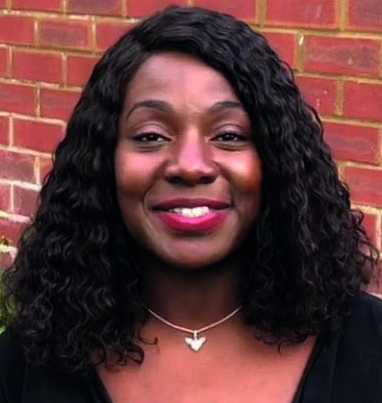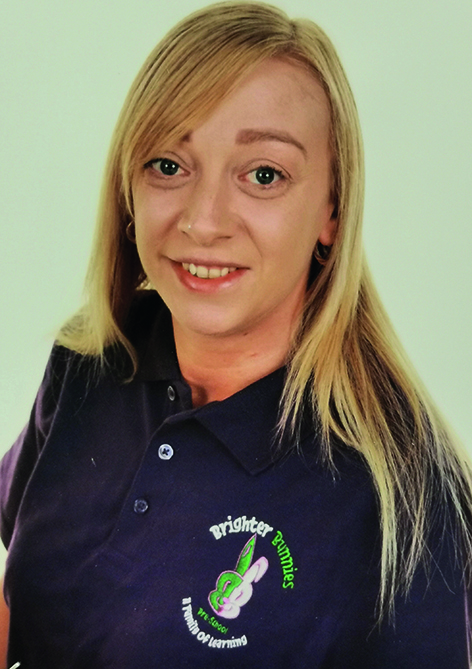
Q. We want staff to be happy in the work environment but feel that there is too much personal chat while they are with the children, especially while outdoors. We think this distracts from them being in the moment with the children. How should we reset expectations?
 Beverleigh Bossman, area manager, Morning Star Nurseries
Beverleigh Bossman, area manager, Morning Star Nurseries
‘This is a problem we have experienced. Staff used to think outside time was a chance to sit down and have a good chinwag. Part of the problem is that inside staff feel like they are being watched, but outdoors they relax.
‘As a result, we introduced some new methods. We held a training session where we discussed what we expected of them when outside.
‘To give the practitioners ideas of things to do with the children outside, we put a box in our garden with pieces of paper in it. Each has a suggestion for an activity or way to engage the children. When practitioners take the children outside, we expect them to use this box rather than chatting.
‘We also introduced a rota for each practitioner to do a physical education session outside each week. They lead a fitness session in the style of fitness coach Joe Wicks.
‘Another way we tackled the problem was to create an outdoor planning sheet. We now expect practitioners to include one observation of every child when they go outside. This is for the parents, so they can see what their child has done outside.
‘The staff have developed better outdoor habits as a result of these steps, and everyone is much more active when we go outside.’
Charlotte Chadwick, deputy manager, Brighter Bunnies Preschool
 ‘This is a tricky one. As a manager you do not want your staff to feel they are forbidden from engaging with each other. You need to be able to have some balance. But obviously, their job is to be with the children. If a child is pulling at your leg trying to get your attention, you are probably talking too much.
‘This is a tricky one. As a manager you do not want your staff to feel they are forbidden from engaging with each other. You need to be able to have some balance. But obviously, their job is to be with the children. If a child is pulling at your leg trying to get your attention, you are probably talking too much.
‘At our setting, we believe if people want to have a conversation, it should be about things to which the children can relate. For example, if a staff member wants to talk about how they went swimming at the weekend, that could prompt a discussion with the children about what they like to do.
‘Children do need to see how staff members converse with each other as this helps them learn how to talk to each other too. It improves social skills and confidence. But staff members obviously should not be talking about having a drink at the weekend!
‘Management need to ensure they are providing a role model to staff at all times. If staff are talking outside too much, have a conversation with them about what they could be doing outside instead. Encourage them to continue teaching and learning outside as they would indoors.
‘At our setting we do not have a large outdoor area at the moment, so we prefer to go on walks in the community or to the local playground. When we do this, we are in a line with the children, and this means there is little opportunity to have a [personal] conversation.’
Helene Mark, founder, Outdoor Owls Forest School Nursery
 ‘When children are outside they are often easier to be around. A practitioner may think, oh great, I can just sit down and relax now! But if this happens, management needs to remind them of how they expect them to behave. Whether you are indoors or outside you must engage with children, rather than in small talk.
‘When children are outside they are often easier to be around. A practitioner may think, oh great, I can just sit down and relax now! But if this happens, management needs to remind them of how they expect them to behave. Whether you are indoors or outside you must engage with children, rather than in small talk.
‘We approach play by identifying three styles: free play, guided play, or structured play. All three are really important. Many practitioners from indoor settings are not used to free play. If you just let children play freely inside, it can turn into mayhem – they can end up bouncing off the walls or each other.
‘In free play we do not want the adults to guide children. But this does not mean that you sit and take a break. It means practitioners should be observing the children and know when to step in to facilitate what they are doing and to extend their play.
‘At our outdoor site, there are times when the children are so engaged with their free play that practitioners do not need to offer much support. At such times, we expect practitioners to get busy with practical jobs around the site, such as moving leaves or building a new chair.
‘At the start of the day, managers explain whatjobs need to be done. Sometimes children get interested in what they are doing, and the magic happens when they ask if they can join in. Working and playing can happen alongside each other, or the children get involved and help and it becomes like an outdoor community.’









